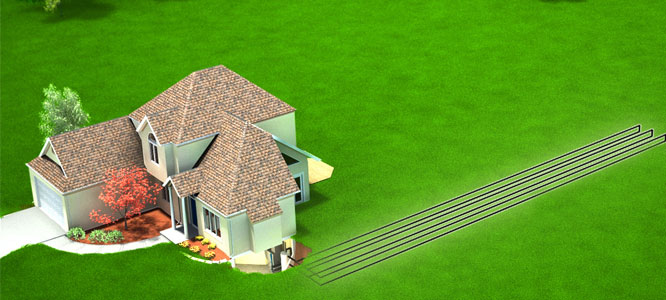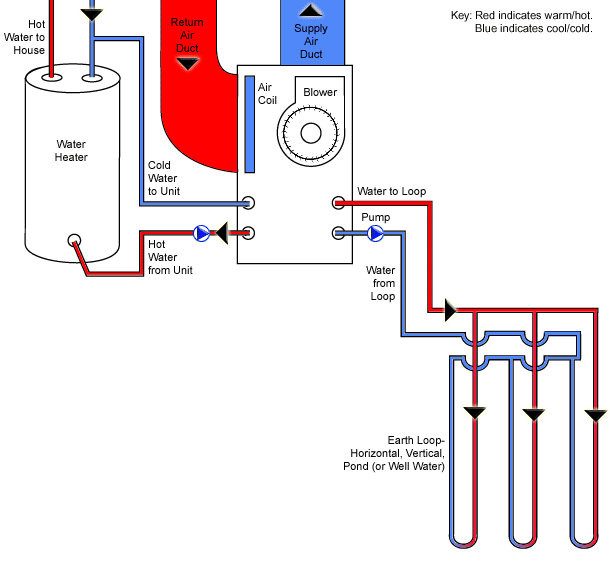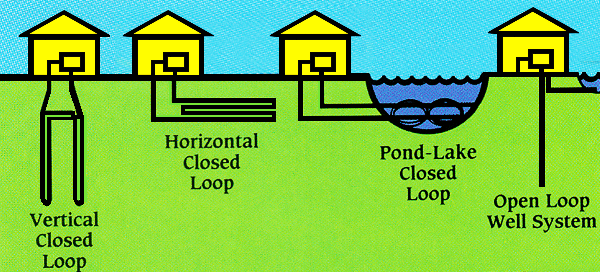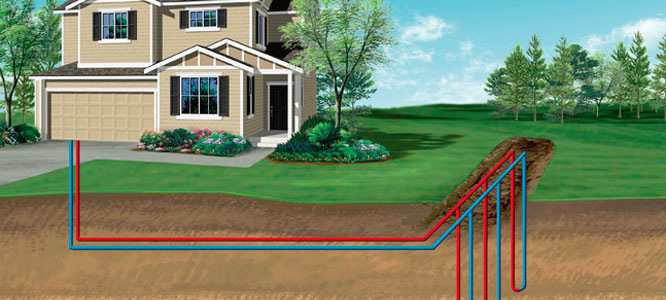What is Geothermal
While this geothermal technology isn’t particularly new, it is becoming much more popular for heating and cooling homes around the world. Here in the Cayman Islands, it’s an outstanding solution that can help reduce the cost of cooling your home or office.
Geothermal heating and cooling uses the energy in your own backyard to exchange heat, the essential function of every air conditioner. You won’t have the noisy external compressor common to traditional central air conditioning systems. Geothermal has a higher initial installation cost, but the long-term savings, operational simplicity, energy efficiency, and quiet operation make the investment worthwhile. Homes near a water source can use geo exchange technology. Using a water source is cheaper to install as you don’t have to dig into the ground to install the piping. EcoSmart has a patented titanium heat exchange system for ocean looped geo exchanged designs.
We service all Makes, all Models
We’ve been in the air conditioning business for over twenty years, so we’re familiar with all brands and models of air conditioners. If your air conditioner isn’t working as well as it once did – or not at all – give us a call and we’ll have a look to see what is needed to cool your home.




Why you should choose Geothermal Cooling
Longevity – A properly planned, professionally installed and maintained geothermal air conditioner has an expected working life of 25 – 30 years, far exceeding the 4-5 year life of typical AC units. Also, since none of the geothermal system is exposed to the elements, they’re much more likely to be unaffected by flooding or hurricanes Power Smart – Geothermal cooling harnesses the energy of the earth to cool your home, requiring much less power than a compressor-based cooling system. A properly planned and installed geothermal system can provide $5 – $8 of cooling energy for every dollar of electricity used v Environmentally friendly – Geothermal cooling systems don’t require flame or fuel to operate; no fossil fuels means no carbon production, and that’s good for everyone
Peace and Quiet – Unlike traditional central AC systems, your geothermal solution doesn’t have an external compressor, so the only sound you’ll hear is the cool breeze Multi-function – Your geothermal system can be used to cool your entire home or business while heating your domestic hot water, pool, or hot tub

How Geothermal Works
Geothermal and geo-exchange are two names for the same principle: extracting heat from one area and moving it to another. Here in the Caymans, we don’t have much of a need for heat, but the concept is ideal for a central air conditioning system for your home or office.Geothermal heating and cooling works via the first law of thermodynamics: energy can neither be created nor destroyed, it can only change forms. When two materials come into contact, the warmer material will share its warmth with the cooler item until they’re both the same temperature. You can see this in action by pouring yourself a drink and adding a few ice cubes. The ice melts because the thermal energy from the warmer drink is being transferred to the ice cube. Your geothermal air conditioner works on this same principle: the warm air in your home is transferred to the cool ground in your backyard by changing the form of the refrigerant in the cooling loop.
The cooling process involves the extraction of heat energy from the air in the building, and moving it into the earth. Transferring the heat from the air in the building to the earth involves a cycle of expansion, condensation, compression, condensation and evaporation. A refrigerant is used as the heat transfer medium.
The cooling cycle starts as the compressor delivers refrigerant to the water-to-refrigerant heat exchanger. Heat from the refrigerant is absorbed by (rejected into) the low temperature source (earth loop fluid or well water) resulting in the refrigerant turning cold. The cold refrigerant passes through a refrigerant-to-air heat exchanger. As warm, humid air from the return air duct system is passed over the cold air coil, the air is cooled and dehumidified the returned into the building, cooling the space.
The heat from the warm air that returns to the unit is absorbed by the cold refrigerant, turning the refrigerant into a hot gas. The hot refrigerant is returned to the compressor where the process is repeated continuously during the cooling process. A portion of the heat returning to the compressor (from the hot return air) is diverted to another refrigerant circuit that generates hot water and delivers it to the water heater by way of a small pump.

Ground Source or Water Source Geothermal
There are two primary types of geothermal options: ground source or water source. The components in your home are the same for either source; the chief difference is how and where the exchange mechanism is located. A ground source heat exchanger is buried in your yard, vertically or horizontally depending on the available space. Refrigerant is passed through the system, and it’s the expansion and contraction of the refrigerant that cools your home. The warm air from your home is transferred into the ground. In other climates, this process can be reversed to heat your home in the winter months and cool it in the summer. While this isn’t necessary in the Cayman Islands, some of the heat energy can be used to heat your home hot water, pool, hot tubs, or radiant in-floor heating. A water source heat exchanger performs the same function, but instead of being buried in your yard, the cooling loop is located underwater, either in the ocean or a pond, lake, or in some cases, a well.

Cost Savings with Geo Thermal
At EcoSmart Cooling, we’re trained and experienced with all makes and models of home air conditioning systems, but we’re also able to provide energy efficient alternatives that are ideal for the Cayman Islands climate. One technology that is gaining popularity around the world is the Geothermal heat pump, also known as ground-source heat pumps. You might be thinking “Why do I need a heat pump in the Cayman Islands?” In other climates, most heat pumps do double-duty: extracting the warm air from your home in the summer to cool your home, and stealing the heat from the ground in the winter to keep your family nice and warm. The difference lies in which direction the refrigerant is flowing. Here in the Cayman Islands, geothermal is an excellent option for many reasons.

Made with by EyeCay, Proudly hosted with EyeCay